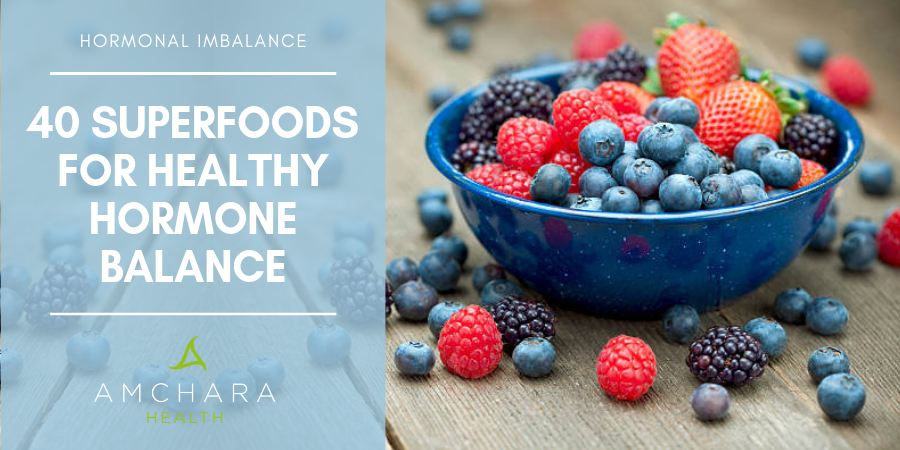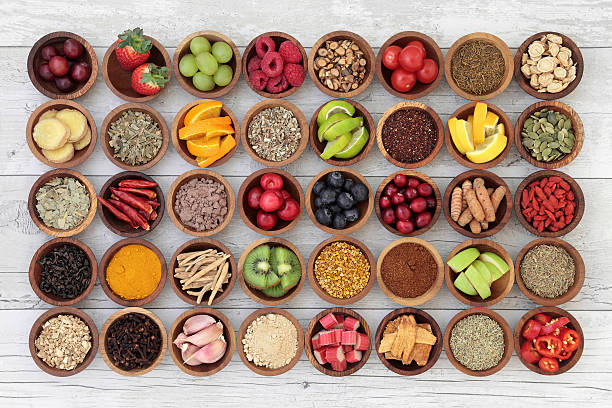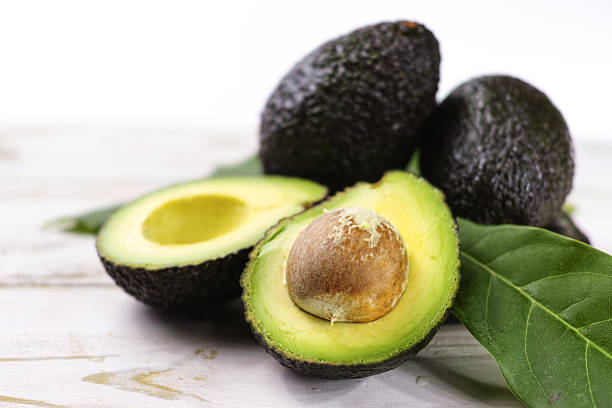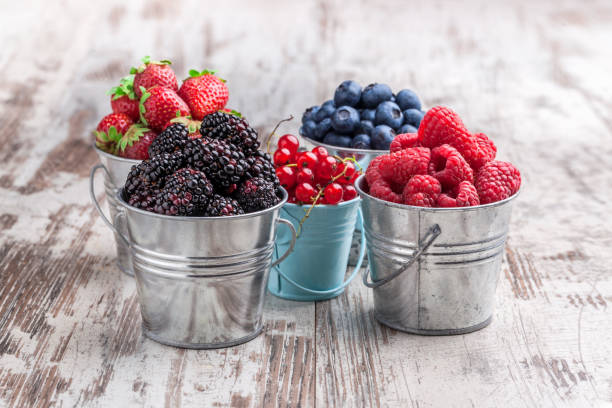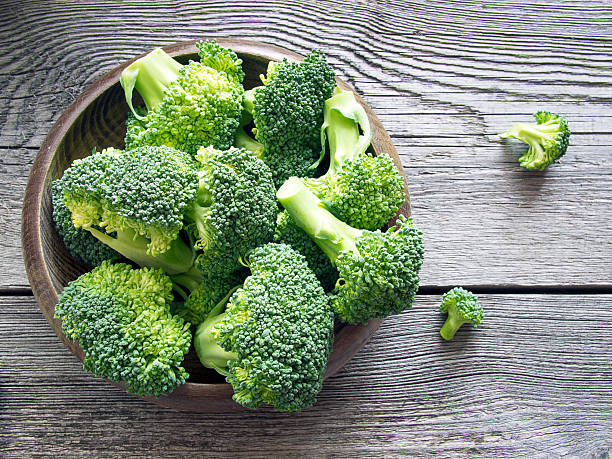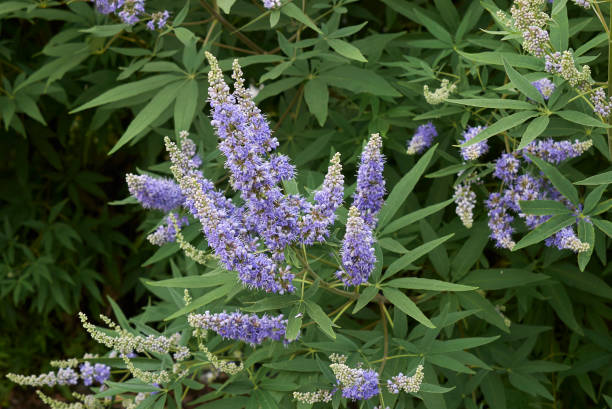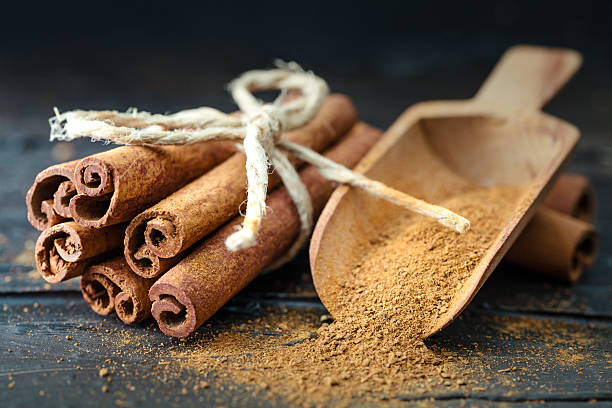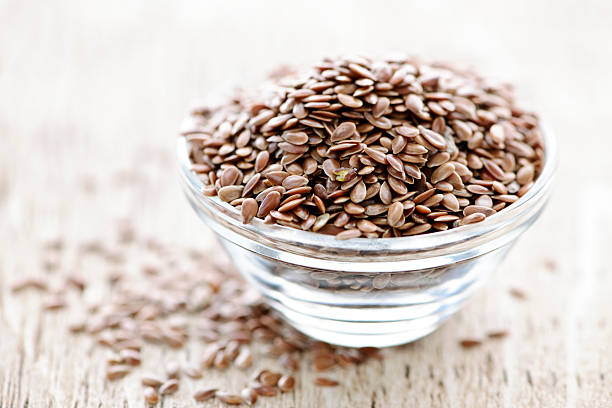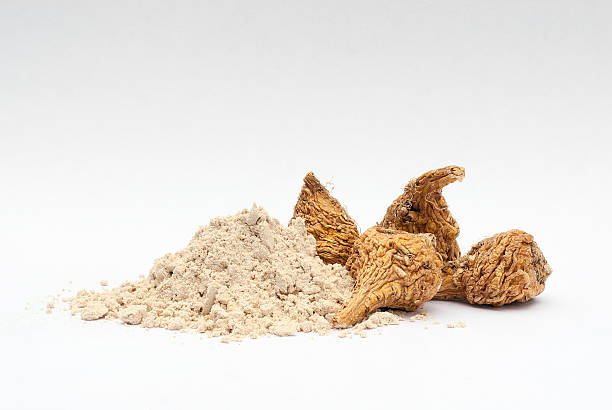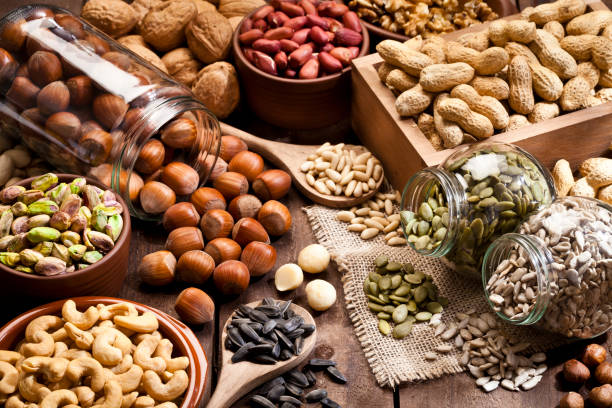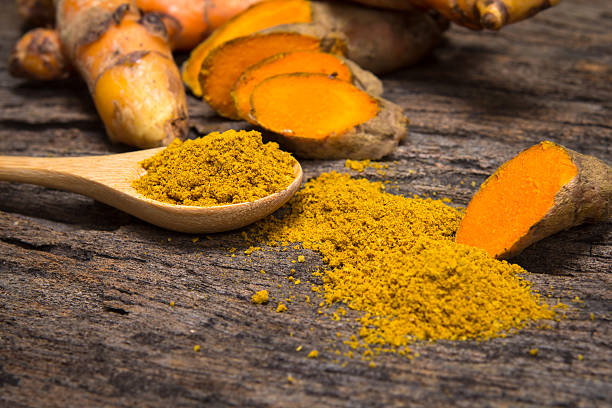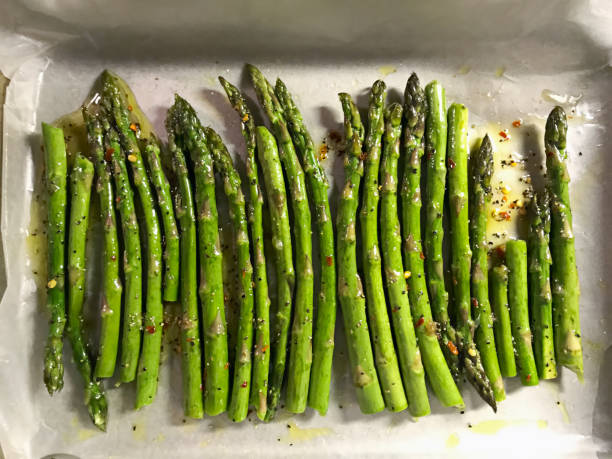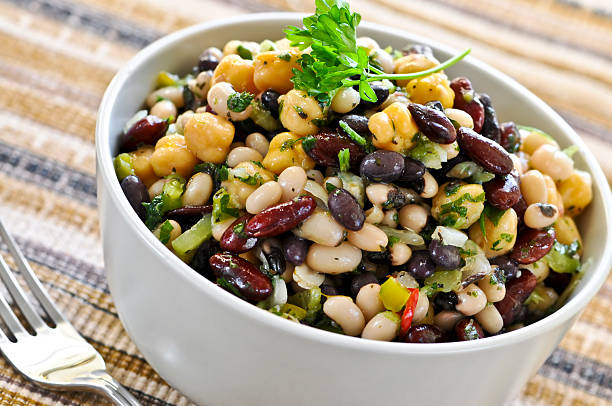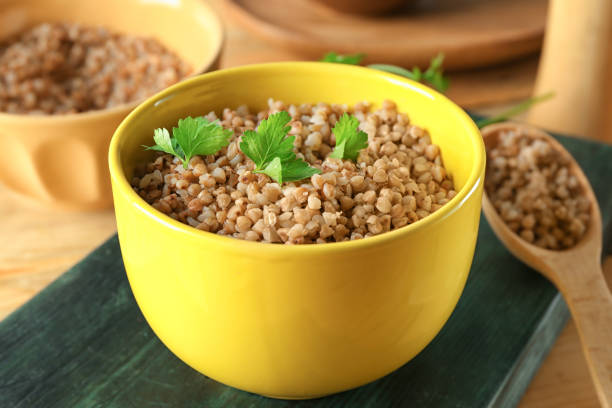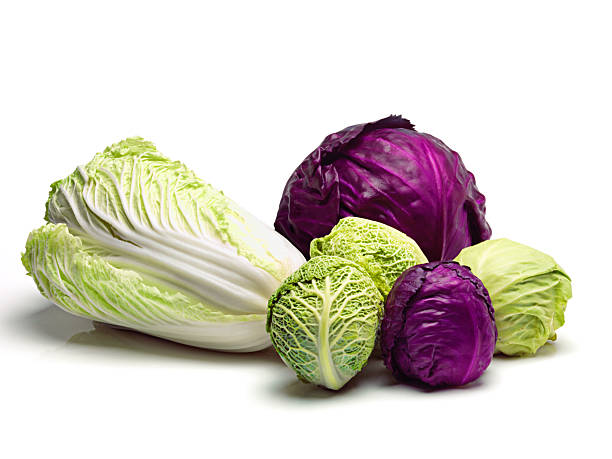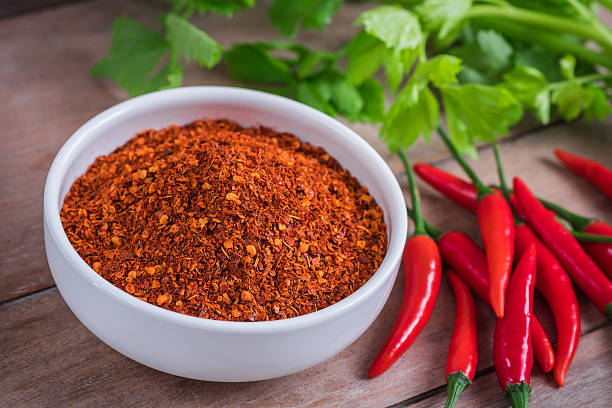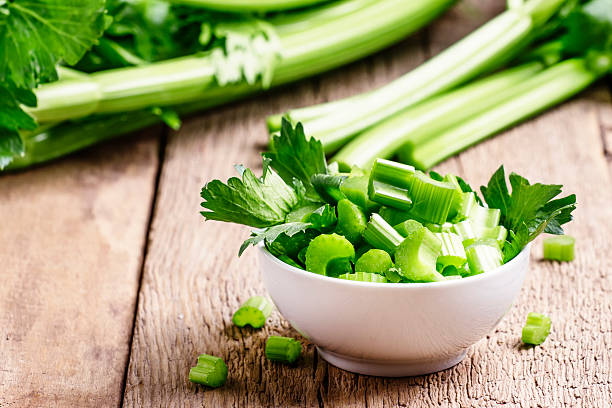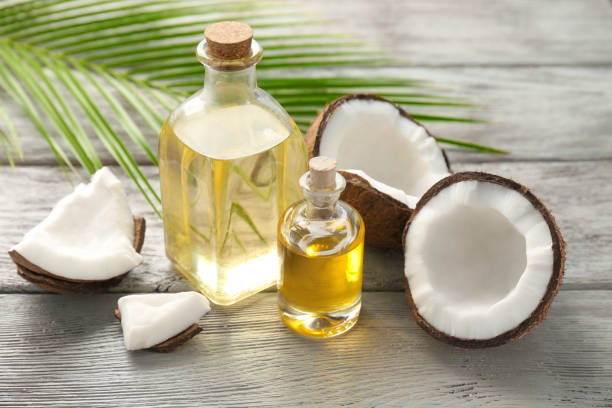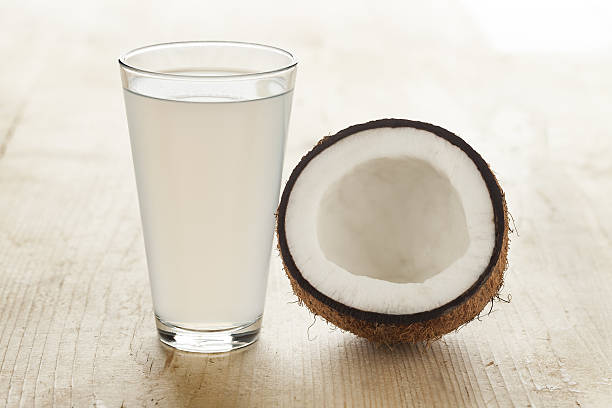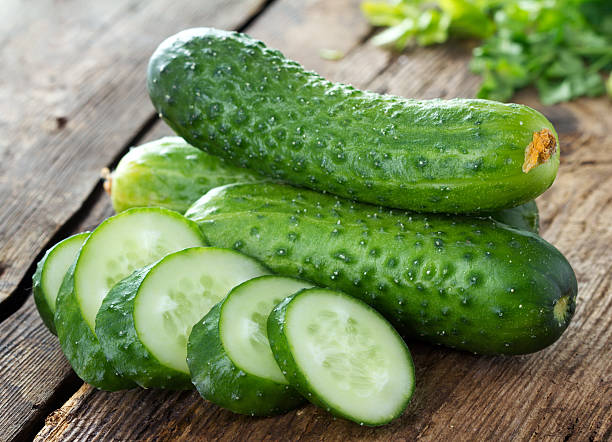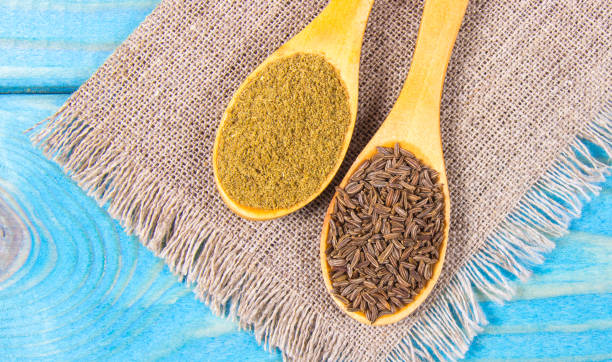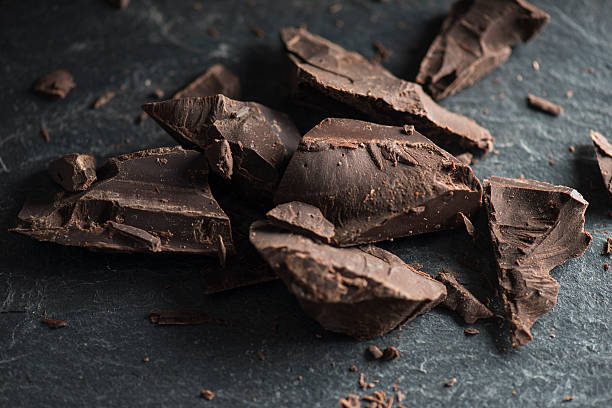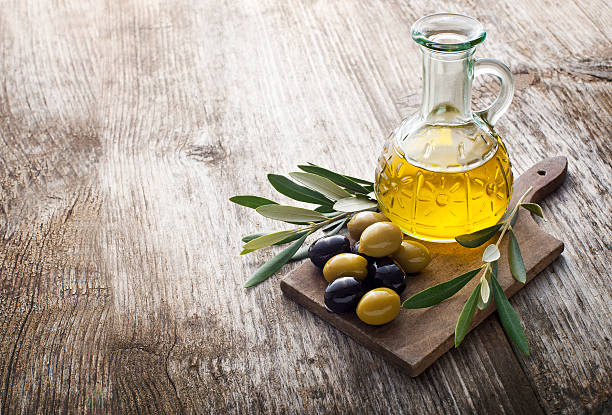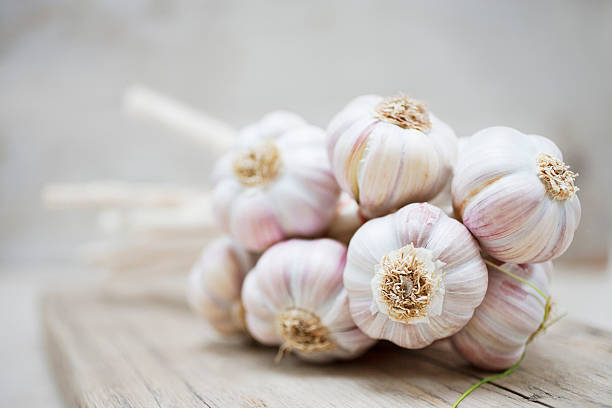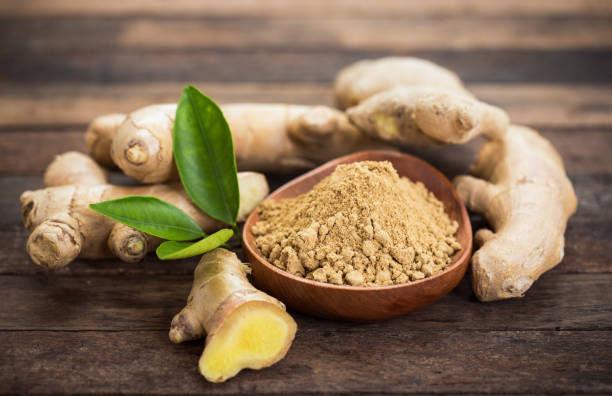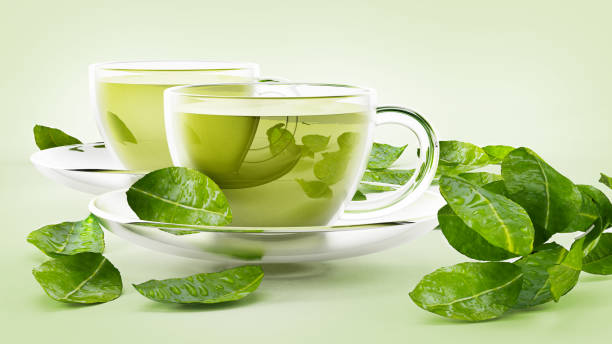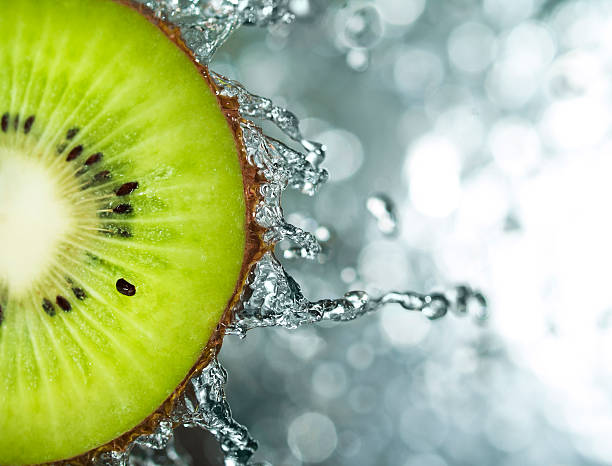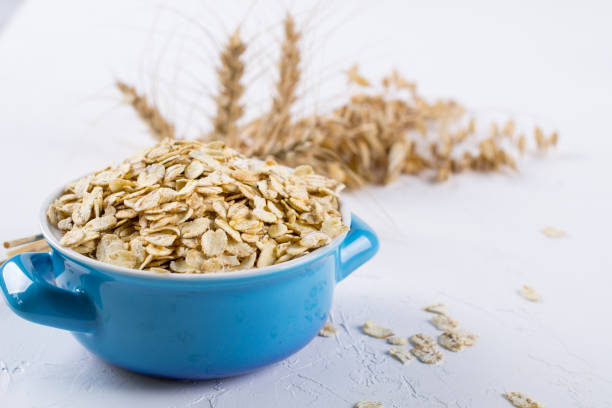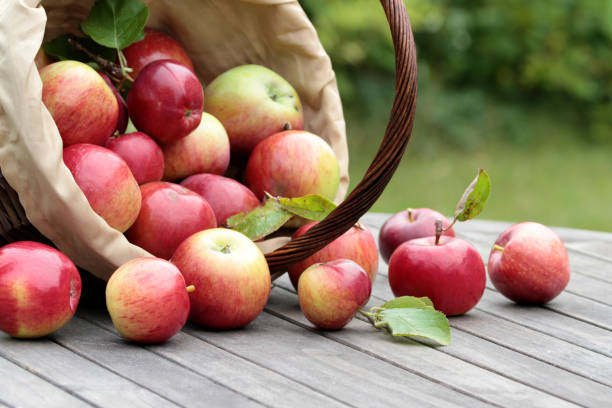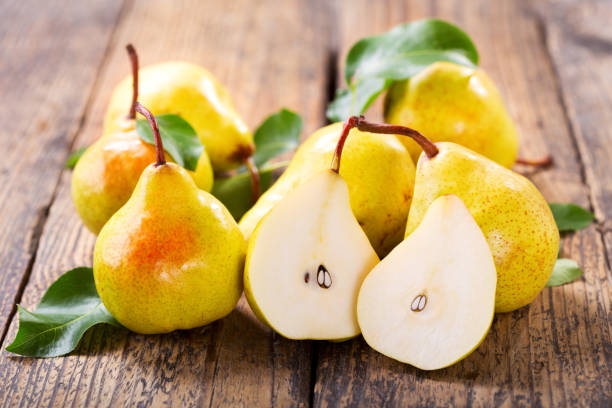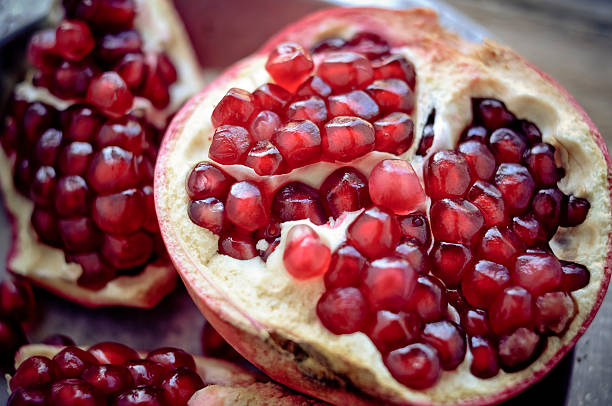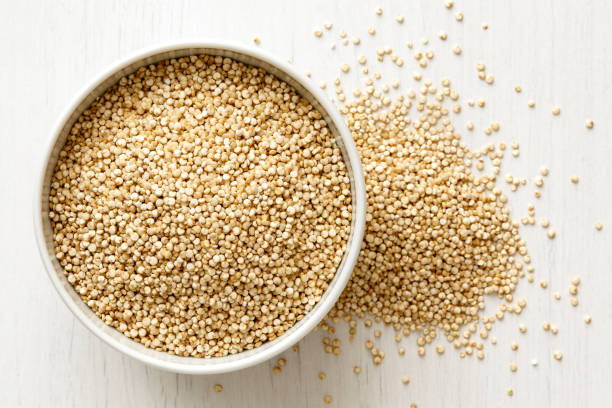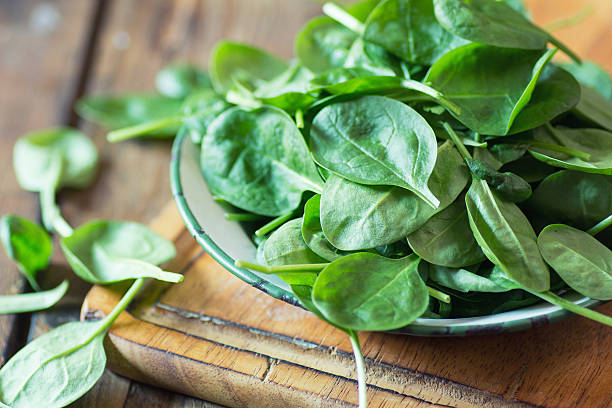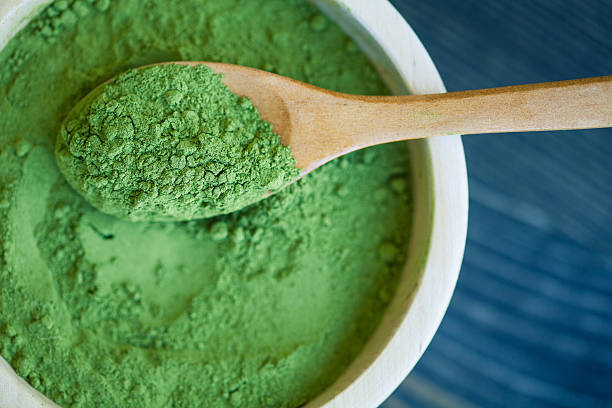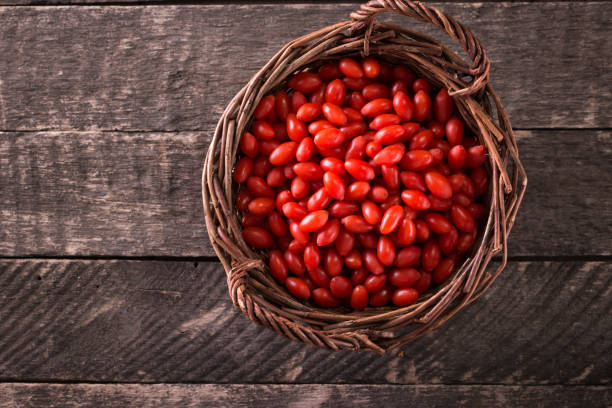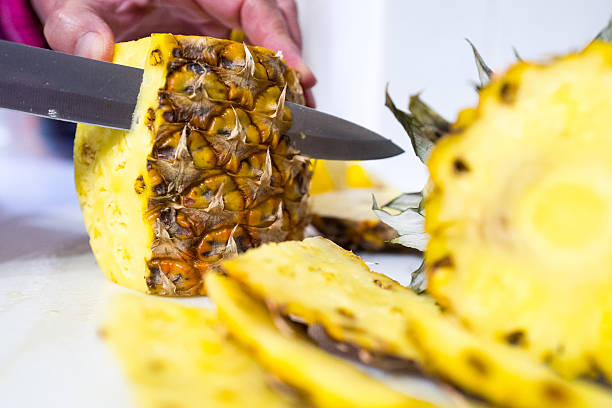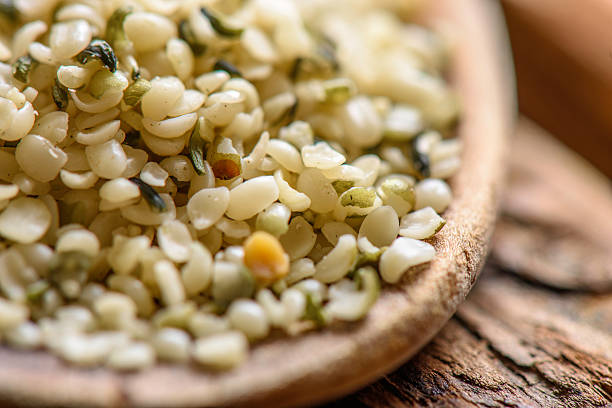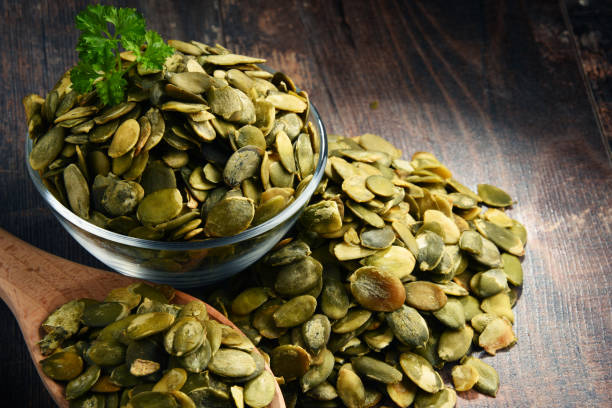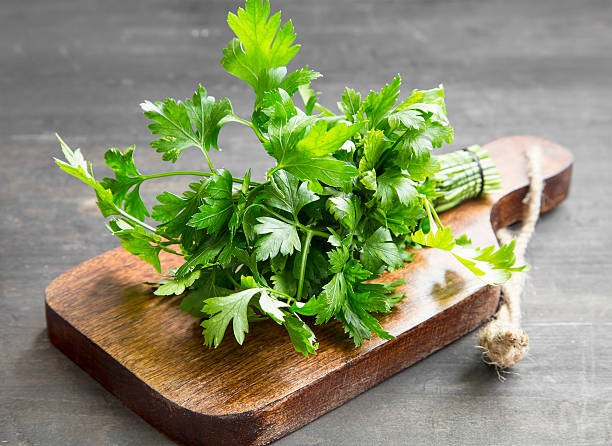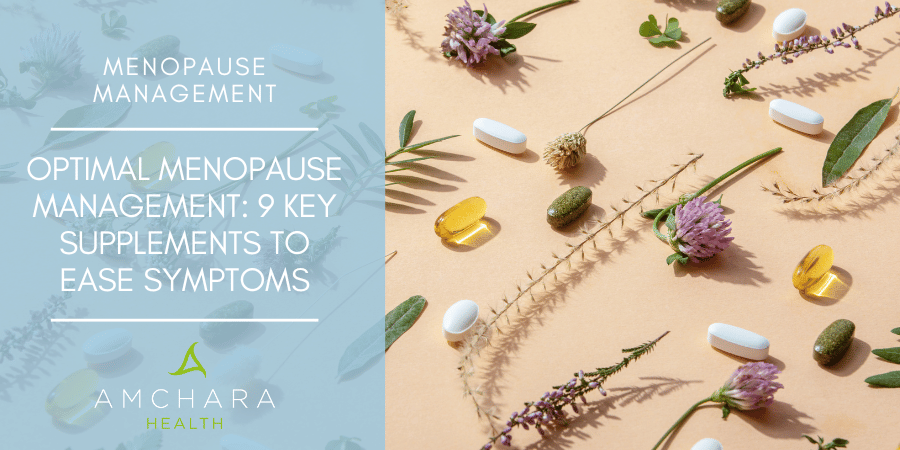Hormonal imbalance is most often associated with pubescent teenagers and menopausal women, but it’s more widespread than most of us would believe.
Although hormone imbalance is believed to mainly occur in females, this is a misconception that needs addressing.
Hormonal imbalance is age and gender proof – which means it can occur in men too.
In fact, hormonal changes occur in everyone and many factors can affect the delicate balance of our hormones.
Our evidence-based approach is orientated towards the Personalised Health approach which treats you as an individual and takes a tailored approach considerate of your unique physiology.
We aim to provide you with actionable knowledge and tips to help you on your journey to optimal health.
Let’s look into the causes and symptoms of hormonal imbalance and what steps you can take to restore your hormone balance, naturally.
Table of Content:
So, what exactly is an hormonal imbalance?
Hormones are the body’s chemical messengers, sending signals around your body which affect all aspects of your functioning.
The balance of your hormones affects your metabolism, heart rate, energy, appetite, sex drive, sleep, growth, development, reproduction and many other functions.
Hormones are released into our bloodstream by our endocrine system.
A hormonal imbalance occurs when levels of certain hormones are disrupted in proportion to other hormones.
Because hormones are involved in so many aspects of our functioning, hormonal imbalance can have wide-ranging effects.
It is said that as many as 80% of women suffer from hormonal imbalance at least once in their lives.
Although it’s not often discussed, many men are also affected.
Could you be suffering from a hormonal imbalance?
In order to answer this, we need to know the symptoms of hormone imbalance, as well as the major contributing factors.
Finally, we want to find out how hormone balance can be naturally restored using food, nutrition and lifestyle changes.
Major Factors Contributing to Hormone Imbalance
What are the reasons behind the growing trend for fluctuating hormones in men and women?
One of the most obvious answers is connected with our modern day lifestyles.
Junk food, caffeine, alcohol, nicotine, stress, poor sleep and lack of exercise can all disrupt our hormonal balance.
Underlying health issues such as thyroid dysfunction, polycystic ovary syndrome and PMS all have hormonal imbalances in common.
The major factors contributing to hormonal imbalance are:
-
Diet
Saturated fats, caffeine, nicotine and alcohol all need to be detoxified by the liver. If it has this job to do, it won’t be as effective in detoxifying our hormones when they’re no longer needed. This can mean they end up being out of balance. We also need certain nutrients to help us not only manufacture our hormones, but to use them effectively.
-
Lack of Exercise
We need regular exercise for overall general health. Exercise keeps the endocrine system functioning optimally and therefore makes sure hormones are balanced. An incredible twenty million adults in UK are classed as physically inactive.
-
Mental Stress
When we experience stress, our body’s chemistry changes. Not surprisingly, we produce increased amounts of stress hormones, which can in time tire out our adrenal glands. Stress can also interfere with our thyroid and cause an imbalance in our sex hormones. In fact, ongoing mental stress can create havoc with hormones.
-
Environment
Plastics, solvents, pesticides and other pollutants are capable of mimicking hormones, particularly oestrogen, affecting your hormone balance.
-
Poor Sleep
Not being able to sleep is in itself a major stressor so can over time disrupt our hormone balance. In turn, hormones control our sleep pattern.
-
Blood sugar balance
A diet high in sugary snacks, caffeine and alcohol can lead to highs and low in blood sugar. This disrupts levels of our insulin as well as our stress hormones.
-
Ageing
The natural process of ageing can cause hormonal imbalances, in men some of the key male hormones such as testosterone naturally decline. This can result in male menopause or andropause.
-
Medication
Medication like contraceptive pills, HRT and even painkillers may have adverse effects on hormone levels, leading to hormonal imbalances.
Symptoms of Hormonal Imbalance
Millions of people are affected by the symptoms of hormone imbalances throughout their lives but may not connect their symptoms with their hormones.
It’s easy to confuse symptoms originating from a hormonal imbalance with other health related issues.
Sufferers often don’t seek medical help, viewing their symptoms as minor disconnected problems.
Hormones contribute to the overall functioning of the body, so a hormonal imbalance can adversely affect how the entire body works.
However, the symptoms of hormonal imbalance can at times be confused with common symptoms produced by other diseases.
So, what should you do if you suspect that you have hormonal imbalance?
The first step is to think about your symptoms. If you suffer from various ailments and aren’t sure whether they could be due to fluctuating hormones here’s a list of some common symptoms:
Women
-
Unexplained weight gain
-
Depression and anxiety
-
Fatigue
-
Mood swings
-
Insomnia
-
PMS
-
Low libido
-
Belly fat and loss of muscle mass
-
Sweating
-
Digestion issues
-
Foggy memory
-
Poor sleep
Men
-
Low sex drive
-
Erectile dysfunction
-
Infertile sperm
-
Enlarged breasts (gynecomastia)
-
Breast milk production
-
Lack of concentration
The above list is not exhaustive but may prompt you to consider whether you have a hormonal imbalance.
It’s not only adults who are prone to hormonal imbalance. Children can be affected, most notably around puberty when they begin to produce sex hormones.
To try and avoid developing hormone imbalances, it’s important to understand how to keep our key hormones balanced naturally.
To do that, we need to identify the most important hormones:
-
Dopamine – a hormone best known for its association with addiction, mood regulation, cravings, drive and the reward cycle.
-
Insulin – this glucose regulatory hormone is involved in blood sugar balance.
-
Serotonin – often referred to as the ‘happy hormone’ because it affects our mood.
-
Growth Hormone – as its name implies, growth hormone stimulates growth in all tissues of the body.
-
Prolactin – a hormone associated with maintaining sex drive in both men and women. It is also vital for breast milk production in women.
-
Oestrogen – is predominantly responsible for the features and characteristics related to female development. It is also produced in men’s bodies but in lower quantities.
-
Progesterone – is involved in the regulation of the menstrual cycle. It is released in the last two weeks of a woman’s cycle, where it helps to maintain the womb lining. Progesterone also supports a healthy pregnancy.
-
Testosterone – is to men what oestrogen is to women, although women do also produce testosterone. It is associated with the development of male characteristics.
If you suspect you have a hormone imbalance, various blood, urine and saliva tests are available to establish if your hormones are out of kilter.
Hormone testing in conjunction with a practitioner can be a useful way of revealing hormone imbalances.
How to Balance Your Hormones Naturally
A healthy varied diet is the first step to establish hormonal balance:
-
Eat plenty of organic fruit and vegetables
-
Choose good quality protein like lean poultry and meat, oily fish, beans and pulses
-
Include healthy fats like olive oil, avocado, flaxseed oil and coconut butter
-
Keep your diet low in sugar and processed foods
This kind of diet will help to keep your body and especially your hormones in balance, but you can multiply these benefits by adding in some Superfoods in the list below that we have put together for you.
Lifestyle Tips for Healthy Hormones
Manage your Weight
Reducing your waistline means it’s easier to keep hormones in check. Overweight people are more prone to hormonal imbalance than people with weight in normal range.
Manage your Stress
It’s impossible to eradicate stress in your life, but you can change both your perception of stress and your response to it.
Try yoga, meditation or deep breathing exercises.
Clean up your Act
Avoid plastic food and drink containers, use natural toiletries and household products wherever possible to reduce your exposure to hormone-mimicking chemicals.
Now let’s take a look at the hormone-balancing Superfood champions to include regularly in your healthy diet!
What is a Superfood?
There’s no precise definition of a Superfood.
But it’s generally accepted that to be referred to as a superfood, we mean a nutrient-dense food especially beneficial for our health and wellbeing.
Years ago, food was thought to contain a relatively narrow range of nutrients – protein, carbohydrate and fats, along with various vitamins and minerals.
Science is discovering new and amazing plant chemicals (known as phytochemicals) every day which have incredible health benefits.
Usually, the plants synthesise these chemicals for a specific purpose to help their own existence – but our bodies can harness these substances for our own needs.
All the Superfoods on the following list are packed full of these phytochemicals – protective antioxidants, flavonoids, vitamins and minerals.
These are essential for managing many of the symptoms related to the hormonal imbalances faced by men and women today.
This planet has a fantastic array of foods containing amazingly beneficial nutrients for us to choose from.
They’re too numerous to mention, so we’ve cherry picked our top forty favourites (in no particular order) to make it easier for you in the quest to balance your hormones.
Our top 40 Superfoods for hormone balance:
1. Avocado
A firm favourite in salads, avocados offer as many as 25 different vitamins and minerals.
Not only that, they contain a good balance of healthy fats – both omega-3 and omega-6.
These fatty acids help to reduce inflammation which can disrupt hormone balance.
The B vitamins in avocados help support adrenal health and therefore can balance the important stress hormones.
Avocados can be used in numerous ways – try them in salads, dips, on toast and to add creaminess to your breakfast smoothie.
Before eating it’s best to store them at room temperature for 4-5 days. As soon as the outer skin turns black or dark purple, the avocado is ripe and ready to eat.
Avocados are a rich source of healthy fat but despite its many health benefits is also high in calories so should be eaten in moderation by those watching their weight.
Here is an amazing blog post about the benefits of Avocados:
https://www.authoritydiet.com/eating-avocado-good-you-health-benefits-nutrition/
2. Berries
Berries are some of healthiest fruits you can find.
They are packed with antioxidants called anthocyanins, which may help brain functioning and memory.
Antioxidants may counter the effects of toxins in the body which can contribute to hormonal imbalance.
Berries are great source of fibre, which is not only important for a healthy digestive system, but also helps to carry used hormones out of the body.
This prevents hormones being re-absorbed into the blood circulation, a key factor in hormonal imbalances.
Berries may also improve blood sugar and insulin response.
You can find room for berries with any meal.
They are great in smoothies, mixed into porridge, to brighten up a salad or added to your favourite dessert.
They also make a hormone healthy snack when combined with nuts.
Lindsey wrote a detailed blog post about the benefits of eating blueberries.
Visit her blog https://bearsqueeze.co/5-benefits-of-berries/
3. Broccoli
Broccoli is perhaps one of the most well-known superfoods because of its multiple health benefits.
It’s a cruciferous vegetable jam-packed with dozens of nutrients.
Having such an abundance of nutrients makes broccoli a perfect vegetable, particularly when it comes to hormone balance, because it can help to reduce any potential negative effects of excessive oestrogen.
Phytochemicals in broccoli also help with the detoxification of hormones by the liver.
Studies have demonstrated that broccoli may help to prevent certain types of cancer, reduce cholesterol and also improve bone health as it is high in bone-building nutrients calcium and vitamin K. It also contains powerful antioxidants that can help your skin health and protect your eyesight.
The best way to cook broccoli is to steam just until it is still a little crunchy but tender.
Those with low thyroid function should avoid eating large amounts of raw broccoli as it contains goitrogens – substances that affect thyroid hormone production.
Here is a very detailed blog post about the health benefits of broccoli:
https://plantcaretoday.com/health-benefits-of-broccoli.html
4. Chaste berry (Vitex Agnus Castus)
Chaste berry is a part of flowering plant from the Mediterranean region.
It is widely cultivated in many tropical and subtropical regions throughout the world.
Chaste berry deserves a place on our superfood list because many women have reported it to be hugely beneficial in relation to symptoms related to menstrual irregularities or menopausal issues.
Usually taken as a supplement rather than eaten as a berry, it is used regularly to balance hormones because it is believed to help balance the ratio of progesterone to oestrogen.
It appears to do this by supporting both the pituitary and thyroid gland which control the release of various hormones.
Men can also benefit from Chaste berry due to its natural anti-androgen activities.
Lowering testosterone levels could be beneficial for reducing the risk of prostate cancer.
Chaste berry doesn’t have any major side effects but there have been a few instances in the past of people feeling mild side effects such as dizziness, tiredness, headache, nausea, dry mouth, and gastrointestinal problems.
As a supplement it is not recommended to be taken for more than 6-8 months at a time or if on any hormone medications.
If you are on medications, always check with your GP before taking supplements.
Discover more about Chaste berry by visiting this article:
https://www.selfhacked.com/blog/chasteberry-vitex-agnus-castus/
5. Cinnamon
The first of the spices on our superfood list is the mighty cinnamon.
Cinnamon is a powerful spice that’s been used traditionally in a therapeutic capacity to balance blood sugar for more than 1000 years.
Blood sugar balance is crucial for keeping your hormones in equilibrium which is why it can be beneficial to include cinnamon in your diet.
Researchers believe cinnamon ranks first in 26 spices in terms of the protective antioxidants it contains – it’s packed with 30 times more antioxidants weight for weight than goji berries!
1 tablespoon of cinnamon contains an impressive 68% of our daily recommended intake of manganese, 8% of the RDI of calcium, as well anti-inflammatory flavonoids.
If cinnamon is applied to skin, it may cause irritation and redness.
Consuming cinnamon in huge amounts may theoretically be toxic, due to its ‘coumarin’ content, particularly for people with sensitivities or liver problems.
Carly Dolan wrote a great blog post about the health benefits of cinnamon.
6. Flaxseed
Flaxseed is a nutritional powerhouse, despite its tiny size.
It contains all sorts of components that are required to maintain a healthy body. It is high in omega-3 essential fatty acids, which can be scarce in our diet, and which help not only to balance hormones but also to reduce inflammation.
Flax seed contains beneficial fibre which improves digestion and provides a good medium for our healthy bacteria to thrive in.
It can be broken down by our digestive bacteria in to lignans, which are weak oestrogens.
These appear to be able to compete with our body’s oestrogen for oestrogen receptor sites on the surface of our cells. Since it is less strong than our body’s oestrogen, it can reduce the effects of excessive oestrogen, often a factor in PMS and fibroids.
Early research found eating a muffin containing 25g flax seed daily for three months reduced breast pain associated with PMS.
This is amazing given that many of the therapeutic properties of flax can be inactivated by high temperatures.
Flaxseeds are great added to smoothies or muesli, or try flax seed oil as a salad dressing or drizzled over cooked vegetables.
Flax seed oil should not be heated, and it needs to be kept in the fridge.
Kate B. Forsyth wrote a brilliant blog post about the benefits of eating Flaxseeds:
https://behealthy.today/9-fantastic-benefits-flaxseed/
7. Maca Root
A relative newcomer to the superfood party, Maca root has a gained popularity in recent years.
It is actually part of the cruciferous family of vegetables, which includes broccoli and cauliflower.
Maca root contains a good level of protein, and a single 28g serving contains 23% of our recommended daily intake of iron, as well as good levels of zinc and magnesium.
Maca root also contains substances called plant sterols which appear to balance our endocrine system and can be particularly helpful to balance stress hormones.
Studies have shown it can increase libido in both men and women.
It may also increase fertility in men, as well as boosting libido and alleviating menopausal symptoms.
Maca root is usually sold as a powder or can be taken as a supplement.
The powder has an earthy, nutty taste and is very versatile. It can be used in baked goods, pancakes, energy bars and more. Try powdered Maca root in a smoothie.
Dr. Jockers has written a very detailed blog post about the Hormone Balancing Benefits of Maca.
https://drjockers.com/5-hormone-balancing-benefits-of-maca/
8. Super-nuts
A nut is actually a fruit.
However, unlike fruits they aren’t sweet and are low in calories whilst being high in protein and essential fats.
They are packed inside a hard shell that usually needs to be cracked to release the fruit inside.
Nuts are a great source of nutrients such as protein, B vitamins and vitamin E, all in a very convenient package.
Walnuts in particular are a great source of hormone-balancing omega-3 fatty acids.
Some popular super-nuts include almonds, brazils, cashews, hazelnuts, pecans, pine nuts and walnuts.
Brazil nuts are high in selenium, which is essential for thyroid hormone production.
Almonds contain good levels of vitamin E.
Note that peanuts are not actually nuts as they grow below the ground.
They are classed as legumes, and have a very different nutritional make-up, often causing allergic reactions in sensitive people.
Eat nuts as a snack or sprinkled over salads. Cashews blend well in smoothies.
Always eat nuts unsalted and when they are super fresh, as their high oil contents means they spoil easily.
Namrata Kothari has a detailed blog post about Dried Fruits, Nuts and Seeds:
https://superfoodsliving.com/superfood-guide-part-2-dried-fruits-nuts-and-seeds
9. Turmeric
Called the ‘golden herb’ in Ayurvedic medicine, turmeric is one of the most effective and widely used superfoods.
It contains a compound called curcumin which gives it its beautiful colour.
Curcumin is believed to act as a plant (phyto) oestrogen, helping to bring down oestrogen if it’s too high.
Turmeric also appears to have powerful anti-inflammatory properties.
It has been successfully used in studies to relieve menstrual cramps.
You are probably familiar with turmeric in curries and stews and soups, but you can even add it to smoothies or make a delicious and warming turmeric latte.
Blend 1 tablespoon turmeric with just over two cups of almond or coconut milk, 1 tablespoon coconut oil, a quarter teaspoon each of cinnamon, black pepper, and ginger root powder.
You can always add some maple syrup if you like a little sweetness.
Using turmeric alongside black pepper appears to make it easier for the body to absorb.
Here is a website entirely dedicated to the benefits of Turmeric:
https://www.turmericforhealth.com/turmeric-benefits/how-turmeric-benefits-female-reproductive-system
10. Wild Caught Oily Fish
When it comes to best non-veg superfood, it’s hard to beat wild caught oily fish.
Fish are a potent source of not only good levels of protein but also hormone-balancing omega-3, in a form most easily utilised by the body.
Farmed fish, on the other hand, don’t have such high levels of omega-3, and are fed pesticides and antibiotics to ward off parasites and diseases in their cramped environments.
Unfortunately, many fish species are threatened due to overfishing, or are caught in waters with high levels of pollutants, meaning that nasties such as mercury, industrial chemicals and microplastics build up in their bodies.
Choose fish that have the lowest levels of pollutants and are most sustainable by selecting wild caught Alaskan salmon pacific sardines or char, which is similar to trout.
We like ‘Ailis’ blog post about ‘Why You Should Be Eating Wild Caught Fish’:
http://thestrongmovement.com/fishy-businesswhy-you-should-be-eating-wild-caught-fish/
11. Asparagus
Asparagus is a spring vegetable belonging to the lily family, and it’s packed with nutrients, so it’s a worthy contender as a superfood.
Purple asparagus contains the most antioxidants, white asparagus the least.
This vegetable is a great source of vitamins such as vitamin A, B vitamins, vitamin C, E and K, as well as minerals including iron, calcium, magnesium and zinc, all important for hormone balance.
It also contains a substance called asparagine, which is a natural diuretic.
This substance may help to reduce the pre-period bloating experienced in PMS caused by the retention of water and salt.
Asparagus can be served hot, cold, stir-fried, grilled or roasted and even raw.
Some people might notice a smell in their urine after eating asparagus.
This is harmless, and whether this happens to you or not is determined by genetics.
12. Banana
Banana, the instant energy booster, has been a part of our diet from more than 1000 years.
More than 100 billion bananas are consumed worldwide every year out of which around 51% are eaten at breakfast time.
It’s been included on our list of superfoods because despite often being overlooked, it’s a key player in hormone regulation.
Bananas are a rich source of vitamins and minerals especially potassium and vitamin K.
They also contain the amino acid tryptophan, which acts as a precursor to the neurotransmitter serotonin, otherwise known as our happy hormone.
This hormone also plays a role in regulating our sleep patterns.
Substances contained in bananas also may play a role in the release of another brain chemical dopamine, associated with pleasure and motivation.
Be mindful that bananas do contain high levels of sugar.
They are great for an energising snack or in smoothies when combined with some protein like nuts, protein powder or yogurt.
Helen Sanders wrote a detailed article about the ’10 Surprising Banana Health Benefits’:
https://www.healthambition.com/10-surprising-banana-benefits/
13. Beans
Beans are flowering plants belonging to the Fabaceae family.
Beans are an affordable source of proteins, fibre, and vitamins.
They also contain plant oestrogens such as isoflavones and lignans to assist the balance of progesterone and oestrogen.
Versatile and tasty, use them in soups, stews and cooked in salads.
Choose from black beans, adzuki beans, broad beans, kidney beans and borlotti beans, to name a few.
It’s unsafe to eat raw beans as they contain lectins, which can cause stomach upset.
Soaking the beans, rinsing them then boiling at high temperature for at least ten minutes will deactivate the lectins in beans.
Sprouted beans have higher levels of protein and amino acids.
Sprouting appears to make the hormone-friendly minerals like vitamin B12, iron, magnesium and zinc much easier for our bodies to absorb as well as destroying the lectins.
Soak and rinse the raw beans before sprouting.
Once sprouted, you don’t need to cook the beans and they are delicious with salads, although they’re also great in stir-fries.
We found an amazing article by Dr. Julian Whitaker that you may want to read: ‘Six Super Health Benefits of Beans‘:
https://www.drwhitaker.com/six-super-health-benefits-of-beans
14. Buckwheat
Buckwheat is commonly eaten in Asia countries, but it is slowly gaining popularity in Europe, USA and Canada due to its many health benefits.
Although commonly thought of as a grain, it’s actually a seed.
Buckwheat is rich in protein and fibre, is gluten-free and it contains high levels of antioxidants, so it deserves a place on our superfood list.
A cup of Buckwheat contains 6 grams of protein, plus a whopping 34% of your RDI of hormone- regulating manganese, along with zinc, iron, magnesium, vitamin B6 and folic acid.
It also contains 6g fibre, which has been found in studies to increase the level of antioxidants in the digestive system and so help with the excretions of hormones when they’re no longer needed.
Buckwheat is found as little grains called groats, flour or made into noodles.
To cook buckwheat groats, first rinse them well then cook in water for around twenty minutes. Buckwheat flour is delicious made into crepes.
Kate Barrington (A Certified Fitness Nutrition Coach) wrote a detailed article about ‘The Health Benefits of Buckwheat‘:
https://www.naturespath.com/en-us/blog/health-benefits-of-buckwheat/
15. Cabbage
The much-maligned cabbage is a green vegetable incredibly rich in nutrients and very low in fat and calories, so we are going to elevate its status by deeming it to be a superfood!
It is a rich source of vitamin C and B vitamins as well as being an excellent source of vitamin K which plays a role in bone health.
Cabbage, in particular red cabbage, is a rich source of antioxidants such as the ingredient needed to make indole-3-carbinol which plays a role in healthy metabolism and excretion of oestrogen by our liver.
Along with other cruciferous vegetables like broccoli and cauliflower, people suffering from thyroid problems should avoid eating too much raw cabbage.
Krista Ewert wrote (on her beautiful blog) about the forgotten superfood that is cabbage:
http://www.kristaewert.com/2016/02/26/cabbage-the-forgotten-superfood/
16. Cayenne
Cayenne pepper has been used as a food and medicine for over 9000 years.
Originally from Central and South America, this spicy nutritional powerhouse contains a substance called capsaicin, which may help to balance blood sugar levels.
Cayenne is high in vitamin A, potassium, B vitamins and vitamin C, and 100g cayenne pepper contains over 100% of your recommended daily intake of Iron.
Use cayenne to add spice to cooked food as you would black pepper, or add to soups or stews .
Traditionally, those suffering from ulcers are told to avoid cayenne as it can be an irritant, however recent research has suggested cayenne may actually be protective of ulcers.
Further research is needed.
We’ve discovered an interesting read on Dan Hammer’s blog post “The Health Benefits of Cayenne Pepper“
https://www.danhammerhealth.com/cayenne-pepper/
17. Celery
Love it or loathe it, celery is an excellent source of antioxidants, vitamins and minerals such as vitamin K, vitamin C, as well as other nutrients such as potassium, and folate.
Studies have shown that vitamin K can boost testosterone production, which probably accounts for celery’s traditional reputation as an aphrodisiac.
One cup of celery contains 25% of the RDI of vitamin K.
As if this wasn’t enough, celery also contains a substance called androsterone, a steroidal pheromone also found in male sweat, which is thought to be attractive to women!
Celery is incredibly versatile, since it can be eaten raw or cooked, and is a great addition to a cleansing vegetable juice.
For further reading we recommend Dr Nandi blog about the “10 HEALTH BENEFITS OF CELERY“:
https://askdrnandi.com/10-health-benefits-celery/
18. Chia Seeds
Originally grown in Mexico, chia seeds are a popular superfood which are rich in fibre, omega-3 and 6 oils, protein, vitamins and minerals.
Chia means ‘strength’ in the Mayan language.
They contain good levels of bone-building calcium – in fact, a 28g serving of these tiny seeds delivers 18% of our recommended daily intake.
They also contain magnesium and zinc, essential for hormone balance.
Chia seeds have gained something of a reputation for the fibre they contain.
Two tablespoons of seeds contain 11g fibre, in fact they’re comprised of 40% fibre by weight.
When chia seeds come into contact with liquid, they are able to absorb nine times their own volume of liquid, becoming jelly-like.
This helps to prevent constipation. Not only this, the fibre in chia seeds helps the friendly bacteria in our digestive system to flourish, which is essential for healthy hormone metabolism.
Use chia seeds in smoothies, sprinkled on salads or why not make a delicious thick and creamy chia pudding?
You’ll need six tablespoons of chia seeds, two cups of almond, coconut or cashew milk, half a teaspoon of vanilla extract, plus whatever fruit you fancy.
Mix the chia seeds, vanilla and milk, leave for five minutes, mix again, then leave in the fridge for 1-2 hours. Add your choice of fruit and some maple syrup if you want a little sweetness.
Source: http://drjessechappus.com/what-are-chia-seeds/
19. Coconut Oil
Coconut oil can be described as a superfood because of its unique combination of fatty acids.
It contains medium-chain fatty acids, including lauric acid.
These types of fats are easy to break down and provide immediate energy for our individual body cells.
Coconut oil has been related to weight loss and brain function and has been shown in studies to have a beneficial effect on our cholesterol levels.
Coconut oil used to be depicted as bad for health as it is a saturated fat, and it was once thought that all saturated fats were bad news.
We now know that not all saturated fats are created equal.
The fats in coconut oil actually perform incredibly important roles in our body, including supporting the thyroid gland and generally supporting healthy hormone balance.
Coconut oil comes in two types – virgin and non-virgin.
Virgin oil has not been processed so retains more of its natural nutrients.
Coconut oil is stable when it is heated so it’s ideal for frying, baking or roasting.
It has hosts of other uses including as a moisturiser for the skin and hair.
Source: https://www.floliving.com/5-uses-coconut-oil-will-benefit-hormonal-balance/
20. Coconut Water
Coconut water is the clear liquid inside the coconut, distinct from coconut milk, which is liquid released by the grated flesh of the coconut.
Coconut water deserves a place in our superfood list as it contains a host of essential electrolytes including potassium, magnesium and calcium, as well as vitamins, minerals and enzymes.
A coconut contains between 200 and 1000 ml of water depending largely on its age – younger coconuts tend to contain more liquid.
The flavour of the water varies depending on the soil and climate.
Because coconut water is incredibly rehydrating, it is often used as a drink after exercise.
In studies, coconut water has been found to increase testosterone and prolactin levels, as well as levels of the messengers that stimulate ovulation in women.
It is therefore thought to play a role in fertility. Coconut water is delicious as beverage on its own or used in smoothies.
Source: https://www.well-beingsecrets.com/15-health-benefits-of-coconut-water/
21. Cucumber
Cucumber is actually a fruit as it develops from the flower of the plant – the clue is the seeds on the inside.
The cucumber has its origins in India, where it has been cultivated for at least 3000 years.
Often an overlooked superfood, cucumber can be incredibly beneficial effect for the liver, which as we know plays an important role in hormone metabolism.
Cucumbers also contain the great hormone balancers we have already met – lignans.
In studies using both cucumber seed and its pulp, cucumber has been found to have a beneficial effect on blood sugar in the case of diabetes, after as little as nine days.
It contains a substance which is needed by the beta cells of the pancreas to produce the hormone insulin.
Use in salads and juices.
Source: https://www.jenreviews.com/cucumber/
22. Cumin seeds
A staple of every spice rack, cumin is a seed and is a member of the parsley family.
Cumin seeds have been used for many years and in many cultures either whole or ground.
Called Jeera in Hindi, cumin seeds are yellow-brown in colour and are rectangular in shape, with a distinctive aroma and flavour.
Cumin contains volatile compounds such as aldehydes and terpenoids.
The spice has traditionally been used in India to balance female hormones, particularly in cases of delayed menstruation and period pain.
Cumin is used in Ayurveda to regulate blood sugar levels.
Scientists believe it may increase the body’s sensitivity to insulin.
Researchers in 2008 found cumin given at a dose of 1g per kg of body weight increased bone density in osteoporosis.
Cumin is a staple ingredient in most curry powders and spice blends, or drink cumin seed tea.
Source: https://juicing-for-health.com/cumin-seed-benefits
23. Dark Chocolate
Dark chocolate is a worthy contender because it contains as much as 176mg per 100g of hormone-balancing magnesium.
It also gives us a good range of antioxidants as well as a substance which triggers the brain to release endorphins – our happy hormones.
Do you reach for chocolate when you’re stressed?
Research suggest chocolate may actually help us to manage stress.
A study in 2009 found that eating 40g dark chocolate per day for two weeks lowered cortisol levels.
Cortisol is released in times of stress and can be damaging to our tissues, causing inflammation and allergies in the long term.
Dark chocolate is made from a higher percentage of cocoa solids and cocoa butter than milk chocolate, and unlike its milk counterpart, it doesn’t contain any dairy.
This gives it a stronger flavour than milk chocolate. It does contain some caffeine, so it’s best enjoyed in moderation.
Raw chocolate is made from unroasted cocoa beans and cold pressed cocoa butter.
The beans aren’t heated over 42 degrees, in comparison to regular dark chocolate, where the beans are roasted up to temperatures of 400 degrees.
This means raw chocolate has even higher levels of antioxidants.
Source: https://www.thealternativedaily.com/coffee-and-dark-chocolate-balance-hormones/
24. Extra Virgin Olive Oil
Extra virgin olive oil is a traditional part of the Mediterranean diet, which has been extensively reported to reap significant health benefits.
Extra virgin olive oil contains monounsaturated oil which plays a role in the health of our cell membranes which allow our hormones to be heard by the body’s cells.
You’ll find olive oil available as regular, virgin or extra virgin.
Extra virgin olive oil is from the first pressing of the olives, and no heat or chemicals are used in the extraction.
Virgin olive oil is the oil from the second pressing whereas regular olive oil is a blend, including processed oils.
Not only does regular olive oil have a lighter colour and less distinctive flavour, it is also usually chemically treated with additives and preservatives.
Research has found that a compound found in extra virgin olive oil can help to increase insulin sensitivity.
Use as a salad dressing or in dips. Ideally buy olive oil in glass bottles to avoid contamination of the oil by plastic.
Extra virgin and virgin olive oil should not be heated.
Source: https://californiaoliveranch.com/olive-oil-101/extra-virgin-olive-oil-health/
25. Garlic
A worthy member of our superfood list, garlic is rich in a compound called allicin, which is responsible for its distinctive smell.
Allicin is well known to be antiviral and antifungal, and garlic also contains sulphur, zinc, selenium and vitamin E.
In terms of our hormones, garlic contains potent antioxidants and also assists with the liver’s detoxification of hormones.
A study in 2001 found that garlic alters the effect of oestrogen by decreasing the responsiveness of receptors for the hormone in our tissues.
It appears to also have a similar effect on the metabolism of testosterone, so it may be of use in prostate cancer.
Garlic can be used in all types of cooking from curries to soups, stews, salad dressing – the list is endless.
Source: https://wendyohareskincare.com/best-hormone-balancer-garlic/
26. Ginger
Native to China and belonging to the same family as turmeric, ginger root is actually part of the stem of the plant which grows underground.
It has been traditionally used for over five centuries in Chinese and Ayurvedic medicine and contains an impressive fifty different antioxidants.
Added to this, it’s delicious!
The main bioactive compound in ginger is gingerol, which is anti-inflammatory and an antioxidant.
Ginger has traditionally been used for nausea, especially morning sickness.
It has also been found in scientific studies to support our stress glands, assist with blood sugar balance and boost the levels of happy hormones in our brain.
It can also assist with blood circulation.
Use freshly grated root ginger in curries, stir fries and soups, use in juices or steep slices in water to make ginger tea.
Source: https://www.bikeradar.com/gear/article/nutrition-ginger-boost-13310/
27. Green Tea
More a super drink than a superfood, green tea is simply tea leaves that have not been fermented.
Green tea has been drunk for over 4700 years in China. It’s loaded with antioxidants – 30% of green tea is made up of polyphenols including catechins, natural anti-inflammatories.
One particular catechin, called theanine, plays a role in decreasing the release of the stress hormone cortisol.
Because of this, many people find it useful for relaxation.
In one study involving 130 women, the level of oestrogen in the blood was found to be 13% lower in those who regularly drank green tea.
Another study, this time from Japan, found that those who drank green tea had 42% less likelihood of developing Type 2 diabetes.
Note that green tea does contain caffeine, an average of 35mg per cup.
Source https://www.pacherbs.com/balance-your-hormones-with-green-tea/
28. Kiwi Fruit
Also called the Chinese Gooseberry, this egg-like fruit contains huge amounts of vitamin C – 100g kiwi contains an impressive 154% of our daily recommended intake of tis vitamin.
As its alternative name implies, its origin is not New Zealand but China.
To further boost its superfood status, it also contains vitamins K and E, omega-3 fats, and phytochemicals known as polyphenols which act as powerful antioxidants. Kiwi fruits also contains good levels of the sleep and mood hormone serotonin.
In studies, consumption of kiwi fruit increased sleep time by 13% and it also improved sleep efficiency – in other words, deeper, more restorative sleep.
The fibre in kiwi fruit encourages healthy bowel movements contributing to effective excretion of used hormones.
Use kiwis in smoothies, desserts or at breakfast time, or simply for a quick snack eaten with a teaspoon.
Source: https://thetruthaboutcancer.com/health-benefits-of-kiwi-fruit/
29. Oat Bran
Oat bran, once only used as livestock feed, is distinct from oatmeal as it contains 50% more fibre and higher levels of minerals.
Oatmeal is the whole grain usually crushed by rollers, whereas oat bran is the bran, or husk.
A worthy hormone-balancing superfood contender, the fibre in oat bran is called soluble fibre because it absorbs water, becoming jelly-like.
This fibre can help escort used hormones out of the body.
Oat bran is also well-known for its beneficial effect of lowering LDL cholesterol, the ‘bad’ type of cholesterol.
Use oat bran in pancakes, muffins, or as a morning cereal with yogurt.
Source: https://www.dukandiet.com/oat-bran
30. Organic Apples
A superfood for many years, an apple a day may well keep the doctor away, as apples contain a compound called quercetin – as much as 4.4mg/100g.
Quercetin acts as an anti-inflammatory and assists the liver in its hormone detoxification pathways.
Apples also contain calcium d-glucarate which appears to play a role in the detoxification of oestrogen via the kidneys and therefore plays a role in maintaining healthy oestrogen levels.
In addition to this, the pectin fibre in apples helps to bind to the oestrogen and makes sure it is eliminated in our faeces.
As many as 7500 varieties of apples are grown worldwide.
Use in salads, as a snack with a small handful of nuts or seeds, or with muesli or yogurt at breakfast time.
Source: https://www.healthbeckon.com/apples-benefits/
31. Pears
Originally from China, pears have been eaten since prehistoric times.
There are now over 300 species of pear.
Pears are a great source of pectin, fibre and nutrients.
Studies have indicated that pears can have a beneficial effect on our sensitivity to insulin.
They contain even more calcium d-glucarate than do apples, so they’re great for encouraging detoxification of used hormones.
Pears make an excellent addition to a smoothie or porridge or enjoy as a snack with a small handful of super-nuts.
Make sure you eat the skin of the pear, as this is where the nutrients are the most concentrated.
Source: http://www.whfoods.com/genpage.php?tname=foodspice&dbid=28
32. Pomegranates
Pomegranates have been around since the time of Greek mythology.
They are said to contain 613 seeds – one for each of the commandments in the Torah, the ancient Hebrew text.
In Islamic cultures, the pomegranate was used at Bedouin weddings as a fertility symbol, and it’s easy to see why, as physically they resemble a female ovary.
These superfruits are high in hormone-balancing lignans and other phytoestrogens and have been found in studies to reverse the bone loss associated with the menopause.
Enjoy pomegranate juiced as a refreshing drink, scatter the seeds over salads or use with desserts where they are pretty as well as nutritious.
Source: http://www.greenmedinfo.com/blog/how-pomegranate-protects-and-extends-menopausal-womens-lives
33. Quinoa
Hailing from Peru and Bolivia, where it was called the ‘mother grain’, quinoa (pronounced ‘keen-whaa’) is a food growing in popularity.
Although it is used like a grain, it is gluten free, high in protein and a unique plant in that it contains all nine amino acids.
Quinoa is high in fibre, magnesium and phosphorus, vitamin E and various beneficial antioxidants such as quercetin.
Being a complex carbohydrate, it can help balance blood sugar levels.
Substitute quinoa for wheat, rice or pasta, add cooked quinoa to a quiche or frittata, or even to a smoothie.
Try making energy balls by combining dates, almond butter and quinoa flakes.
Source: https://www.well-beingsecrets.com/health-benefits-of-quinoa/
34. Spinach
This dark green leafy vegetable can be slightly bitter in taste.
It contains good levels of manganese, iron, magnesium and folic acid as well as a host of other vitamins and minerals.
Spinach contains compounds known as phytoecdysteroids which are natural steroid hormones.
It is thought these are used to deter insect pests.
Research on these compounds is in its early stages, but it’s thought they may improve insulin sensitivity, reduce visceral fat and help maintain muscle mass.
Use spinach frozen or fresh in soups, stir-fries, stews and curries, as well as in green smoothies and juices.
Source: https://guidedoc.com/health-benefits-of-eating-spinach
35. Spirulina
Spirulina is a true superfood. It’s freshwater blue/green algae which is usually found on ponds and is dried into a powder.
It is a concentrated source of essential nutrients and packed with antioxidants – as you might expect from its vivid green colour.
One teaspoon of spirulina powder contains 4g protein, 11% of your RDI of iron, as well as B vitamins.
It also contains the omega-3 fatty acid GLA, which is rarely found in plant sources.
Spirulina has been used for centuries, and it is believed the Aztecs made it into cakes.
It’s been given to astronauts because of its concentrated nutrient content.
Choose organic spirulina, as the inorganic variety can be tainted with pollutants and heavy metals.
Use in green smoothies, soups or juices or add the powder to protein bars.
Source: https://www.authoritydiet.com/what-spirulina-health-benefits-nutrition-algae-powder/
36. Goji Berries
Otherwise known as the Chinese Wolfberry, these little red berries grow naturally as an evergreen shrub in Asia and North America where they are tolerant of extreme climates.
They have been used in traditional Chinese medicine for over 200 years.
Goji berries contain an impressive array of antioxidants, as well as being an excellent source of protein, vitamin A, selenium and iron, justifying their superfood status.
They also contain a little-known substance called sesquiterpenoids.
These compounds appear to increase the release of human growth hormone from the pituitary glands.
Beta sisterols in goji berries are anti-inflammatory and appear to be beneficial in cases of prostate enlargement.
Goji berries are thought to play a role in regulating blood sugar levels.
Eat goji berries as a tasty snack or use as you would any other dried fruit.
Source: www.stylecraze.com/articles/best-health-benefits-of-goji-berries/
37. Pineapple
Dating back from the time of Columbus and then a firm favourite in the European Royal Families, this distinctive exotic tropical fruit was first cultivated in Hawaii.
Pineapple contains good levels of vitamin C, B1, potassium and manganese as well as being a good source of fibre – one medium pineapple contains around 13g fibre.
We’ve noted how important fibre is for hormone levels, especially insulin levels and therefore a healthy blood glucose balance.
One study revealed pineapple can increase the production of testosterone, because it contains both magnesium and zinc, essential for testosterone release.
It appears that pineapple can also regulate melatonin and serotonin levels in the brain.
Pineapple can also indirectly increase the production of human growth hormone, which regulates muscle development, bone growth and sugar and fat metabolism.
Compounds in pineapple such as bromelain act as natural anti-inflammatories, as well as assisting in digestion and therefore aiding our absorption of protein.
Pineapple, because it is both sweet and tart, works equally well in both sweet and savoury dishes.
Source: https://www.3fatchicks.com/7-health-benefits-of-eating-pineapples/
38. Hemp Seeds
Hemp seeds have been used for centuries as a traditional medicine and have even been described as a remedy for everything but death!
Hemp seeds are packed with beneficial oils, in fact oil comprises half the weight of the seed.
This oil is made up of a good ratio of omega-3 and omega-6, along with vitamin D which can reduce inflammation, and vitamin E, so important for healthy hormones.
As if this wasn’t enough, it also contains Gamma Linolenic Acid (GLA), a type of omega-6 oil which is also found in Evening Primrose Oil.
GLA has been studied extensively for its beneficial effect on hormone balance in women.
It appears to interfere with the formation of inflammatory prostaglandins which may contribute to pre-menstrual breast tenderness.
Exciting new research has revealed that hemp seeds are also a source of SDA, an intermediate oil on the omega-3 pathway.
This may mean that the omega-3 oil in hemp is easier for the body to utilise.
Use hemp seeds on salads or in muesli or yogurt. Hemp protein powder is great to add protein to smoothies, while help oil is a wonderful nutty addition to a salad dressing
Source: https://www.precisionnutrition.com/all-about-hemp
39. Pumpkin Seeds
Native to Mexico, and known as pepita, which literally means ‘pip’, pumpkin seeds are a popular remedy for prostate health, and in studies appear to block prostate growth in benign prostate hyperplasia.
These little green seeds are a rich source of zinc, essential for hormone balance and often deficient, especially in men.
They also supply us with omega-3 oils and vitamin E.
As far as women are concerned, pumpkin seeds appear to support healthy oestrogen levels.
Use pumpkin seeds in muesli, blended into a smoothie, as a sprinkle over salad or try delicious pumpkin seed butter as a spread on crackers or the base of a dip.
They’re also delicious as a crunchy snack simply on their own.
Source: https://www.nutrition-and-you.com/pumpkin-seeds.html
40. Parsley
The final superfood on our long list, parsley is native to the Mediterranean region where it has been eaten since the middle ages.
Parsley is one of the most popular herbs in the UK.
Parsley’s list of benefits is impressive.
It acts as a natural diuretic, so can help with water balance, as well as being a rich source of Vitamin A, C and K and antioxidants.
It is said to support the liver’s detoxification role. Parsley contains a substance called Eugenol, which has been found to play a role in our blood sugar balance.
Enjoy this herb as a seasoning in anything from soups to sauces and casseroles. It is traditionally used in tabbouleh salad.
You can even use parsley as a basis to make pesto, with pine nuts, olive oil and either pecorino cheese or nutritional yeast.
Source: https://caloriebee.com/nutrition/12-Health-Benefits-of-Parsley
In case we missed a super food (we did manage to list 40!) off our list, don’t hesitate to add one in the comments section.
Hormone Related Stories:
Thinking of coming to Amchara? | Contact us today to enquire
Stay at our UK or Malta retreats for 3 – 30 days, for a personalised experience! Structured plans just for you, with health and advice from our experts.
Check dates now. Personalised Nutrition. Lose weight & feel good.
